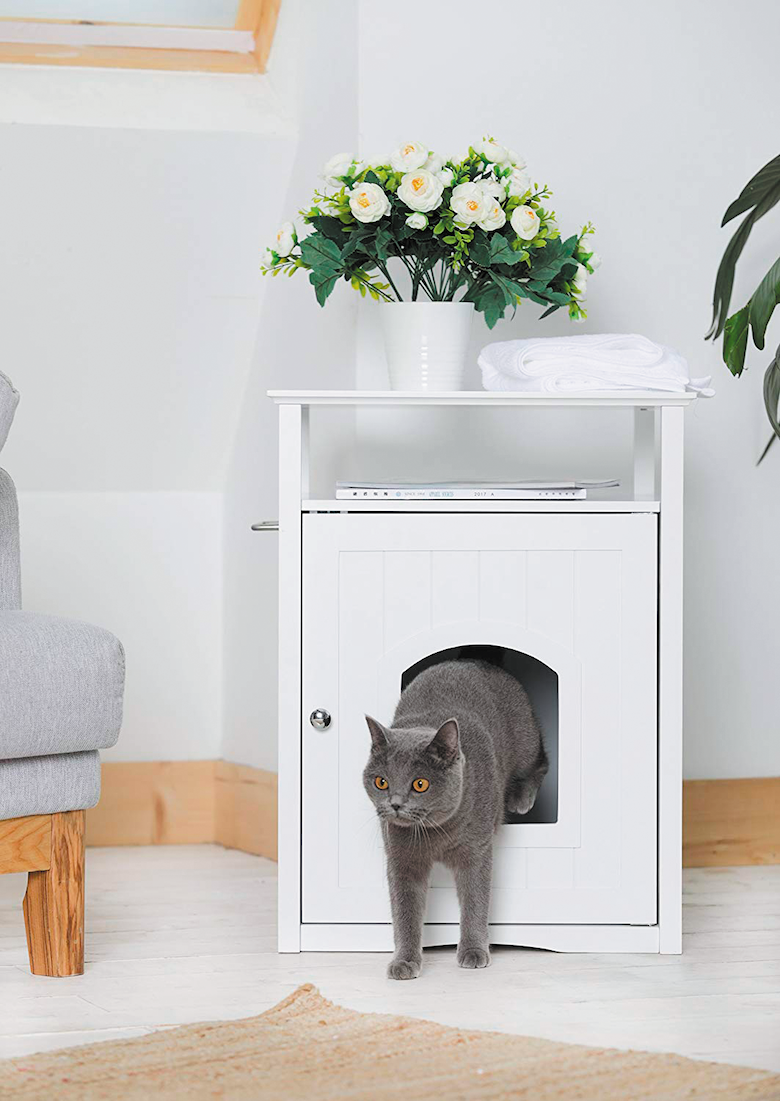Tips for Choosing the Right Litter Box and Litter Box Location
The post Tips for Choosing the Right Litter Box and Litter Box Location by Kate Benjamin appeared first on Catster. Copying over entire articles infringes on copyright laws. You may not be aware of it, but all of these articles were assigned, contracted and paid for, so they aren't considered public domain. However, we appreciate that you like the article and would love it if you continued sharing just the first paragraph of an article, then linking out to the rest of the piece on Catster.com.
Choosing the right litter box may be one of the most important (and overwhelming!) decisions with which every cat owner is faced. Your cat’s litter box is not just where she does her business, it represents a place of territorial ownership and must provide her with a sense of comfort and ease. The style and function of the one you choose will not only affect how your cat feels about using it but will also affect how you feel about living with it. It’s critical to consider your cat’s needs first and then find something that works for both of you. Here are some tips to help you navigate the myriad of options.

High-Sides Cat Litter Pan; vanness pets.com
So many types
A quick online search for litter boxes yields countless results, but you can start by organizing them into two major categories: open and enclosed. Let’s take a closer look at these two styles.

Disposable Litter Box; naturesmiracle.com
Open litter boxes have no top and give your cat the most visibility when inside. They also offer the best airflow and easy access for cleaning. The most basic, and economical, open litter boxes are simple trays with low sides. Some open boxes have higher sides or a shield that extends the sides to make them taller. There are all kinds of variations on the open litter box including corner boxes that are shaped to fit perfectly in the corner of a room.

Split-Lid Hooded
Litter Box; irisusainc.com
Enclosed litter boxes have a top and sides that conceal the litter box. This type of box is meant to give your cat a little extra privacy, reduce the amount of scattered litter, contain odors and keep the litter out of sight. If you’re considering an enclosed litter box, look for one that has adequate ventilation, possibly with an air filter as well, plus make sure your cat has plenty of room inside to stand up and turn around. You can also choose from enclosed litter boxes that have either a side entry or a top entry.
Another way to conceal the litter box is to place the box inside a piece of furniture. These kinds of litter box enclosures can be used for other purposes as well, such as benches or side tables, and you can match them to your décor. Litter box furniture is more of an investment but can be a great way to add an extra litter box to your home, especially if you are short on space.

Modkat Litter Box; modkat.com
Another option is the automatic self-cleaning litter box. Available in both open and enclosed models, self-cleaning boxes have technology that automatically scoops the box as needed. You simply empty the receptacle periodically.

Arm & Hammer Sifting Litter Pan; petmate.com
Another interesting twist on the litter box is the sifting litter box, a multi-layer box system where you lift the top tray to remove solids and the remaining clean litter falls through a grate to the layer below. Dump the solids and place the top tray on the bottom of the stack and repeat next time.

Photo: absolutimages | Getty Images
Most litter boxes are made from plastic so they can be washed out as needed, but there are also disposable litter boxes made from biodegradable materials, so when the box itself becomes soiled you can simply toss the whole thing in the trash and grab a new one.

Photo: Urilux | Getty Images
How many do you need?
The rule of thumb is one litter box per cat, plus one more.
✤ if you have one cat, then you need two litter boxes
✤ if you have two cats, then you need three
✤ if you have three cats, then you need four
✤ if you have four cats, then you need five
Keep in mind, that does not mean litter boxes right next to each other. In order for cats to feel like they have adequate space and resources, each box needs to be in separate areas of your home.

ScoopFree Ultra Self-Cleaning Litter Box; petsafe.net
Choose the box
First and foremost, pick one that is the right size for your cat. Look for a box that is at least one-and-a-half times as long as your cat. This will give him enough room to step all the way into the box, turn around comfortably and do some digging. If your cat really likes to dig and kick litter all over the place, or if he tends to urinate on the side of the box, consider a high-sided box or one with a shield around three sides.

Litter-Robot; litter-robot.com
There are lots of other considerations, depending on your cat and your home. For households with dogs or toddlers, try an enclosed one to keep everyone, besides your cat, out of the box. Senior cats or cats with mobility issues may have difficulty getting in and out of the box, so look for one that has a low cutaway at the entrance.
Not only do you need to find the right box, but you also have to identify the best place for it in your home. Find a balance between privacy and easy access.

CURIO Modern Litter Box; curio modern.com
How to choose a litter box location
 where your cat feels comfortable
where your cat feels comfortable
 that is out of any main traffic areas
that is out of any main traffic areas
 which is not so far off the beaten path that your cat can’t find it.
which is not so far off the beaten path that your cat can’t find it.
Also, make it easy for you to maintain the litter box by picking a place that you visit regularly. You don’t want it to be out-of-sight out-of-mind, because if it is, the box may not get scooped as frequently as it should.

Open Top Cat Litter Box with Shield and Scoop; irisusainc.com
Pay attention to how your cat is using a new box. He will tell you (or show you) if he doesn’t like it. You may have to experiment to find just the right size and style.
Top photograph: Casey Elise Photography
The post Tips for Choosing the Right Litter Box and Litter Box Location by Kate Benjamin appeared first on Catster. Copying over entire articles infringes on copyright laws. You may not be aware of it, but all of these articles were assigned, contracted and paid for, so they aren't considered public domain. However, we appreciate that you like the article and would love it if you continued sharing just the first paragraph of an article, then linking out to the rest of the piece on Catster.com.





Post a Comment